A dark corridor, occasionally illumined by bright red and yellow flowers, leads one to what seems like an abyss. It lights up in seconds. There is something calming about it; you want to reach up and touch it. And with that touch comes alive another wall full of life.
At teamLab’s Borderless, an immersive art experience that recently opened to huge numbers in Tokyo’s Azabudai Hills, a digital canvas makes up an enclosed space. It is meant to stretch the possibilities of human perception. Closer home in Hyderabad’s HITEX Exhibition Centre and until March in Chennai’s Express Avenue mall, almond blossoms from Van Gogh’s masterpiece of the same name fell softly, albeit virtually, enveloping audiences in the warm embrace of the artist’s famous blues.
This is art that goes beyond the physical space of pristine white cube galleries and ebony frames. With technological aid in tow, experiential art exhibits make art accessible simply by being visually stunning.
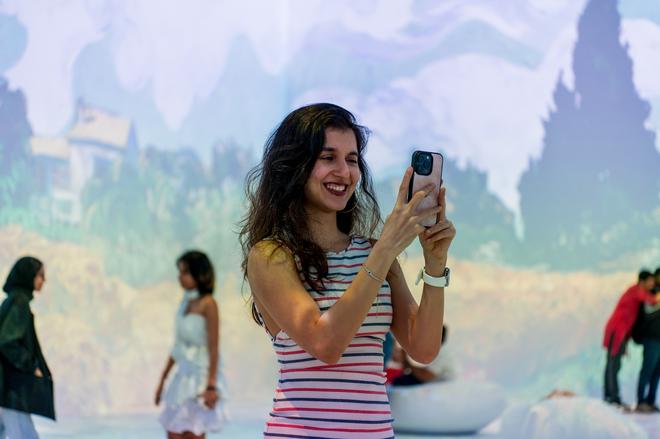
For seasoned art connoisseurs, this is an opportunity to see their favorite artwork from a different perspective, and sometimes even participate in it. For novices on the other hand, this makes an otherwise indecipherable piece of fine art comprehensible. As for the content creator crowd (yes, they form a large per cent of the target audience), it is simply a treasure trove of visually appealing content for social media.
A classic example in India is the famously reclusive Japanese artist Yayoi Kusama’s Infinity Mirrored Room, which has now become a permanent exhibit at Mumbai’s Nita Mukesh Ambani Cultural Centre (NMACC). A mirror-panelled room houses hundreds of LED lights suspended from varying heights, lending a warped perspective of reflections including one’s own.
“Both internationally famous and visually captivating, an exhibit such as Infinity Mirrored Room holds instant appeal for seasoned connoisseurs of art as well the audience who may not have previously known about it. Kusama’s work is the perfect example of how a piece of art, whatever the motivation or circumstances for engaging with it, can usher one into an all-new universe,” says a representative of NMACC. Kusama is considered a pioneer of immersive art, creating such fantastical worlds as early as the 1960s.
The Van Gogh 360 or The Real Immersive Van Gogh Experience — two different exhibits currently traveling the world hinged on the popular post-Impressionist’s work, hope to be a seamless entryway to the artist’s psyche especially for the uninitiated.
Sharan John, founder at Silly Fellows, which recently brought the experience to Chennai and Hyderabad says, “Despite there being multiple narratives, the main focal point continues to be Van Gogh’s evolution as an artist, his unique techniques, and the emotional depth within each piece. The exhibit also serves as an educational platform, providing insights into the artist’s work, his life and the historical context of his masterpieces.”
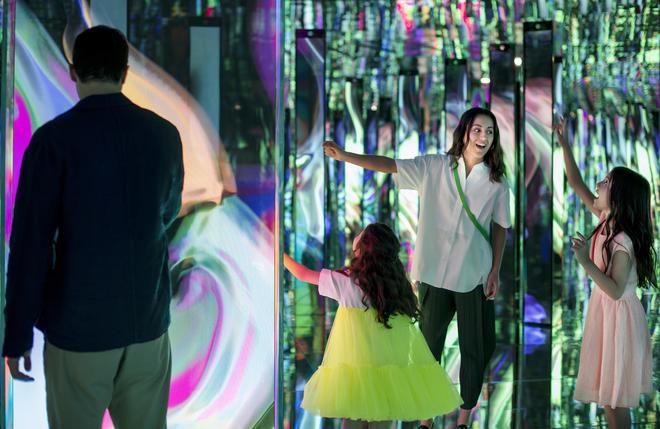
Sans restraint
In NMAAC, for Run As Slow As You Can, an absurdist exhibit imagined by Italian creative studio and image-based magazine Toiletpaper, people were hooked to the VR experience pods that ferried them on a virtual boat across different thematic sections of the exhibit. “Not to forget Oracle, an interactive application that was a part of the showcase, or the widely Instagram-ed bathtub of plastic bananas, which delighted audiences of all ages,” adds the representative from NMAAC.
The endless possibilities of the digital medium is perhaps the biggest draw for creators of experiential art. “Digital technology enables complex detail and freedom for change,” says Takashi Kudo of the international art collective teamLab, which navigates the confluence of art, science, technology, and the natural world. Through art, the interdisciplinary group of specialists, including artists, programmers, engineers, CG animators, mathematicians, and architects, explores the relationship between the self and the world. Today, they are one of the leading players in the immersive digital art space. The collective was born out of frustration and angst, almost as though to prove a point against the alienation faced by digital artists worldwide by the fine art crowd.
“Before people started accepting digital technology, information and artistic expression had to be presented in some physical form. Creative expression has existed through static media for most of human history, often using physical objects such as canvas and paint. The advent of digital technology allows human expression to become free from these physical constraints, enabling it to exist independently and evolve freely,” adds Takashi over a video call from Tokyo.
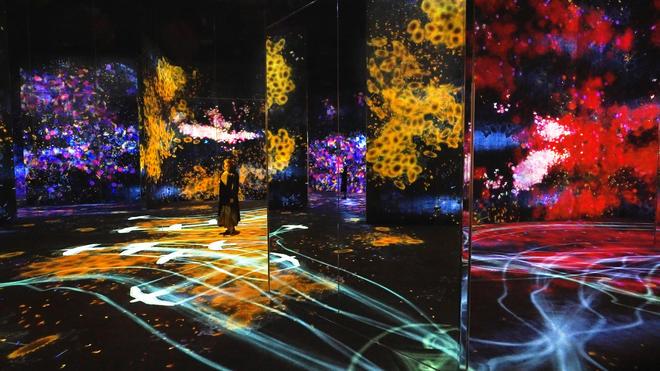
He says that while technology is the core of their work, it is not the most important part. It is still just a material or a tool for creating art. While being admittedly discreet about the technology they use, teamLab is insistent on keeping art at the centre of all their digital pursuits. A teamLab Borderless museum is currently under construction in Jeddah, Saudi Arabia making it their first project in West Asia.
“We are obsessed with the delivery of what we are trying to communicate,” says Sharan about the Van Gogh experience. He says the priority is always the experience, as opposed to whipping up something that appeal to the masses. And so, the display that took 20 days to set up in Chennai was refined to a 22,000 lumens [measurement of projector brightness] projection to lift the experience. “The differentiator is the lumens of the projector and its resolution. Accordingly, the scale changes. The music and content also change from city to city and curation has always been a priority. We are trying to set a new global standard,” he adds.
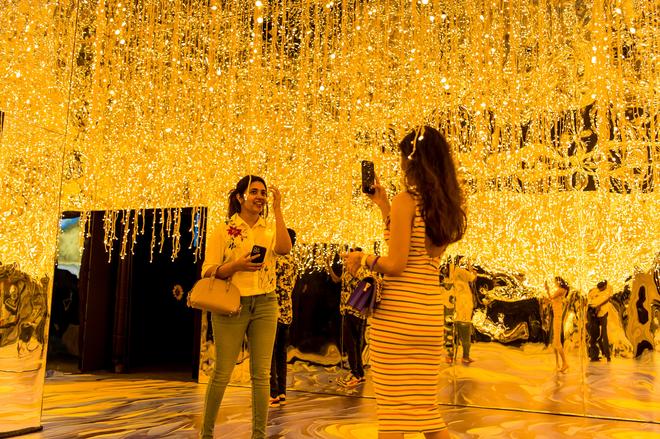
Call of the unknown
A fascination for the unknown, and a natural curiosity towards a futuristic world are definite reasons for the appeal to viewers worldwide. AYA Universe, one of today’s most popular digital museums in the UAE, has a similar approach to teamLab, where various iterations of digital art takes one on an abstract, experiential journey. Here, familiar or decipherable art takes a backseat, and the focus is on immersive digital art and the possibilities of spatial exploration.
“When we saw that there is an influx of entertainment attractions in the GCC (Gulf Cooperation Council) region, we thought it’s about time that we offer something that fits the digital world,” says Kathleen Nikki Fernando, Marketing manager, AYA Universe.
The exhibit has by far collaborated with over 1,800 social media influencers, and has 6,000 Google reviews. 75% of their visitors are international tourists of which Indians constitute the largest sub section in terms of nationality. “85% express their interest in visiting again,” adds Kathleen.
Spread across 12 experience zones, AYA which opened in December 2022, attempts to narrate a story. It traces a trip down a future-forward, beautiful world. The idea is to encourage people to step outside of the real world and into a different universe. Initially they were expecting a niche audience. But it is now one of Dubai’s most popular family attractions — for tourists and locals alike.
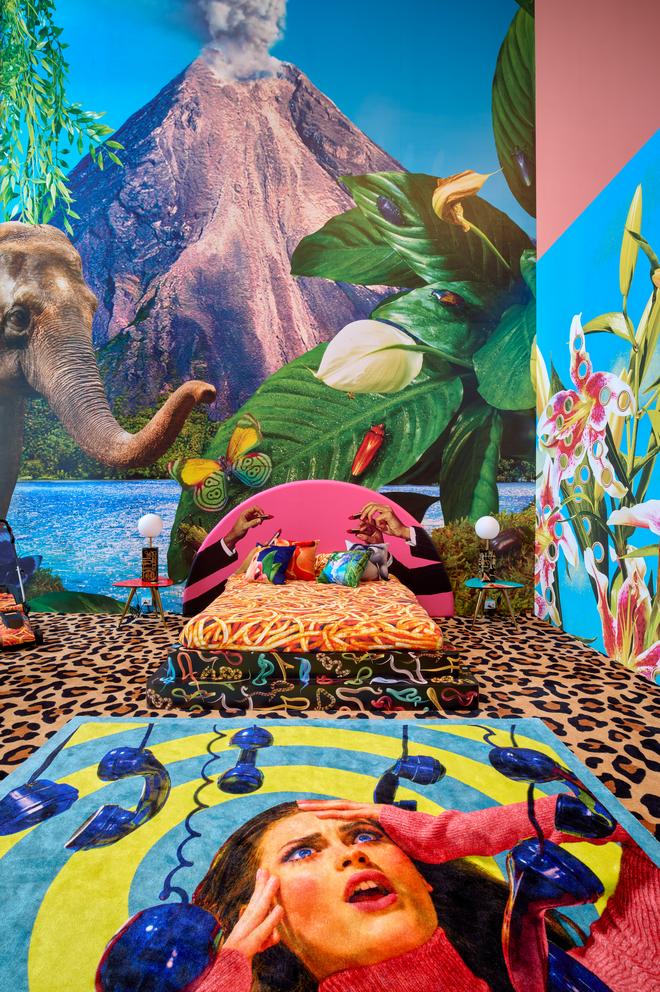
“We were expecting to see a Gen Z audience, but over time, we realised that children with their families come, often in big groups. This nudged us to start a programme for schools as well. It is also the content creators’ heaven,” adds Kathleen. The sheer number of social media collaborators that AYA has worked with is testament to the same. Catering to content creators also means quick, wider visibility, adds Kathleen.
Back at NMACC, Indian contemporary art is now under the spotlight with Liminal Gaps: a three-dimensional drawing that blurs the rules of architecture. It features a temporal universe of identical clocks, and “an installation that follows an Alice in Wonderland-style adventure, in a liminal space that feels as though one is inside a computer game”. Spread across four floors of the Centre, it is on show until June 9. This is only the beginning: “You can expect to see many instances of tech-meets-art in the Centre’s future exhibits,” says the NMACC representative.
Clearly, immersive art is here to stay.
These fantastical scenes are no longer confined to one’s dreams as art finds new mediums to reach a wider audience. It extends beyond the niche, welcoming everyone into its limitless world. And that, perhaps, is its biggest win.







